Despite their easy-going nature, philodendrons do still experience problems, though some are more serious than others.
When your philodendron leaves are curling, for example, it is a sign that something is not right with your tropical houseplant.
Fortunately, most of the things that cause curling leaves on your philodendron aren’t serious, so are relatively easy to fix. Keep reading to find out just how to help your plant recover and get back to its thriving self!
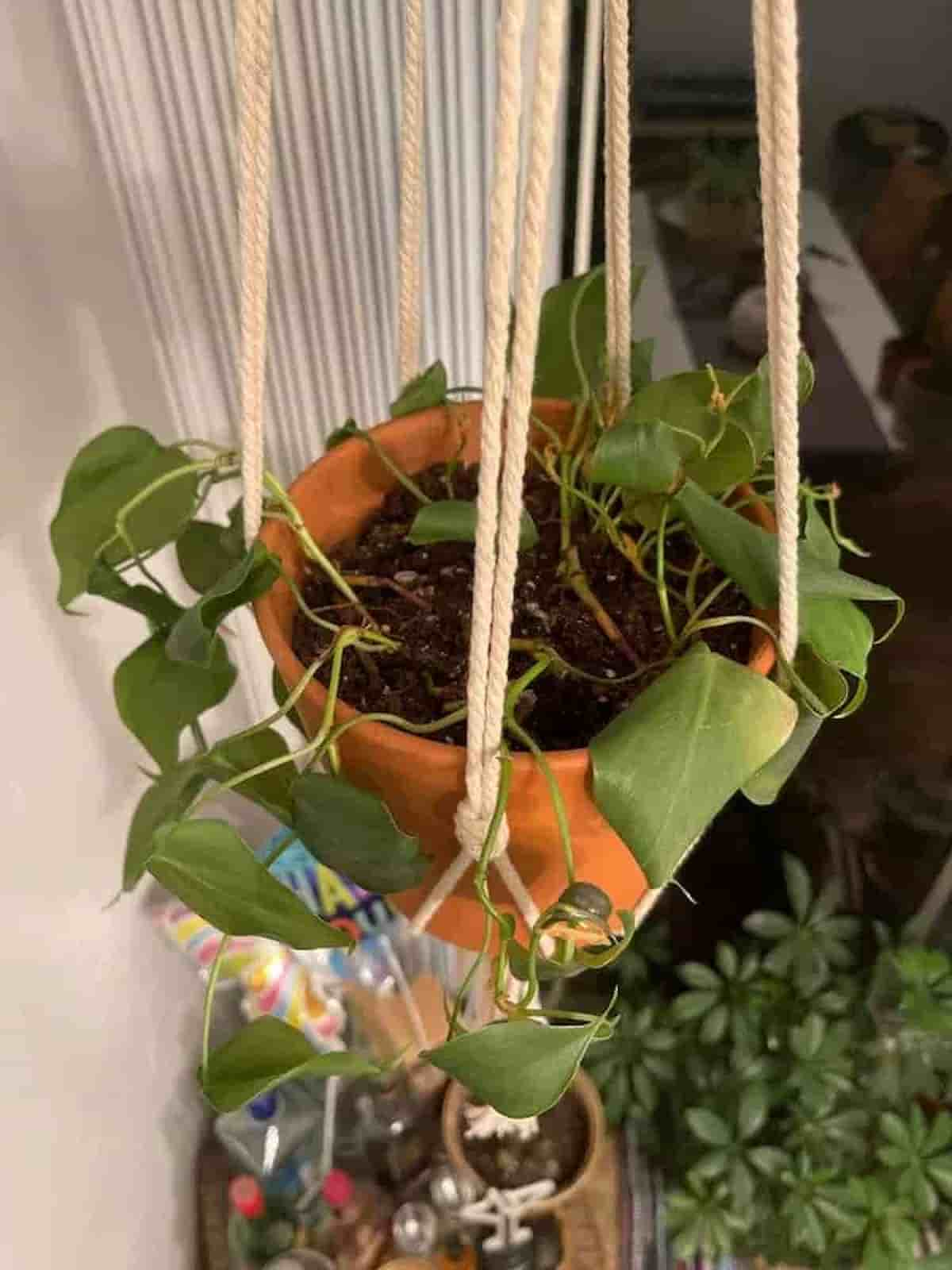
Table of Contents
Why are my philodendron leaves curling?
When a philodendron’s leaves are curling, the most common culprit is usually that the plant isn’t getting enough water. However, other causes can include getting too much water, incorrect air flow, temperatures that are too low, or the plant being subjected to an excessively dry environment.
Those are not the only causes, however, as there are several other potential causes of leaf curling.
1. Underwatering
Underwatering is one of the most common reasons as to why the philodendron leaves are curling.
When the plant isn’t getting the right amount of water, the soil becomes dry, leaves will curl and start to feel dry and crispy, the stems will wilt, and the leaves may even fall off the plant.
Related: Watering Your Philodendron: The Ultimate Guide
2. When the plant is receiving improper air flow
Air flow is extremely important for tropical houseplants, such as philodendron, and without it, the plant’s leaves can start to curl. Additionally, improper air flow can also potentially lead to fungal and bacterial diseases.
3. Too low temperatures
Philodendrons grow the best when they have a daytime temperature of between 75 and 85 degrees, and a nighttime temperature of 65 to 70 degrees.
Anything below these temps and the philodendron can start to experience leaf curl. This is especially common when the temperatures are below 55 degrees for multiple days.
4. Overly dry environment
Philodendrons are native to tropical environments, which means they need a humid environment in order to live and thrive. When they don’t have this high level of humidity, the plant’s leaves can start to dry out, which will cause them to curl.
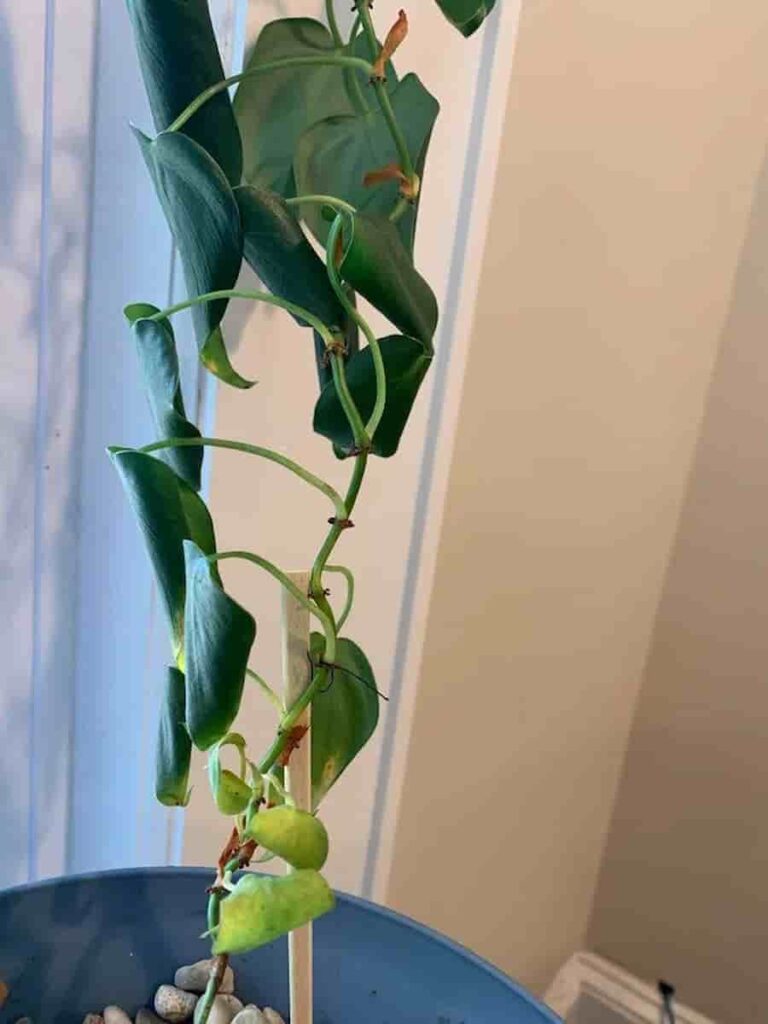
5. Too much fertilizer
While fertilizer is important, giving the philodendron too much feed can cause the leaves to curl, yellow, and fall from the plant’s stems.
This can also occur if the fertilized philodendron plant is of low quality, old, or has the wrong NPK rating for philodendrons.
6. Root rot caused by overwatering
Root rot may just be the most dreaded plant disease that gardeners hope to never experience. This fungal disease occurs when a plant’s roots stay soggy, which is typically the result of overwatering the plant.
When root rot in your philodendron first starts to form, the symptoms are below the soil, which makes it harder to know when someone is wrong.
When they do make it above ground, expect to see that the philodendron has yellow leaves that are curling, as well as water-soaked spots on the leaves and stems that may resemble a blister. Once you see these signs, however, it may be too late to save the plant.
7. Excessive amount or the wrong kind of sunlight
Sunlight is another important aspect of growing philodendrons that can leaf to the plant’s leaves curling if the proper type of lighting isn’t provided.
Philodendrons do not do well in direct sunlight, but they also cannot tolerate full shade. The philodendron leaves turning yellow is another sign that your philodendron’s light needs aren’t being met.
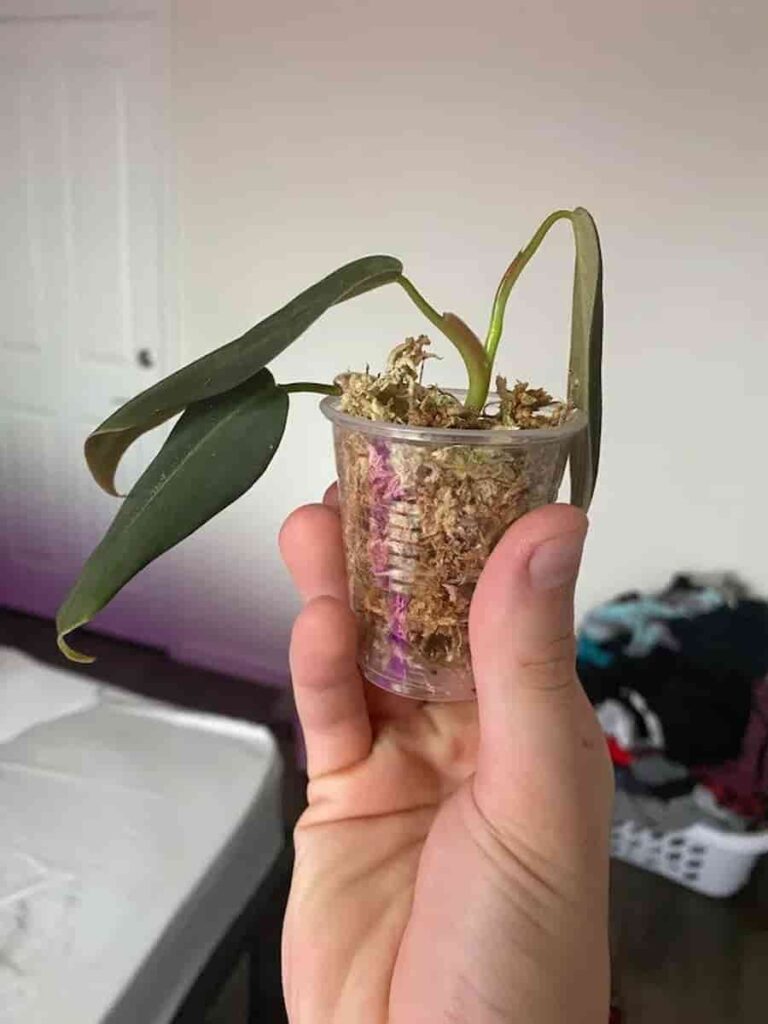
8. Repotting or transplanting the philodendron can lead to leaf curling
Sometimes you will have to transplant or repot the philodendron, such as when the plant outgrows its pot. While this is a common part of houseplant care, that doesn’t mean it can’t have unintended side effects to the philodendron, and leaf curling is one of them.
Leaves curling after repotting or transplanting the philodendron is due to the plant being in shock. The plant may also experience yellowing leaves with or without brown edges, leaves drooping, or leaves just falling off the plant.
9. Temperature fluctuations
Temperature fluctuations are another potential cause of leaves curling. Even if you have the plant in a room that receives the proper temperature, if the plant is next to a draft door or window, or under a heating/cooling vent, it can still experience symptoms associated with improper temperatures.
10. Poor water quality
When your philodendron leaves are curling, consider the water quality you are giving the plant. Tap water is filled with excess minerals and even chlorine, both of which can damage the philodendron leaves. Along with leaf curling, you may also notice yellow spots on philodendron leaves.
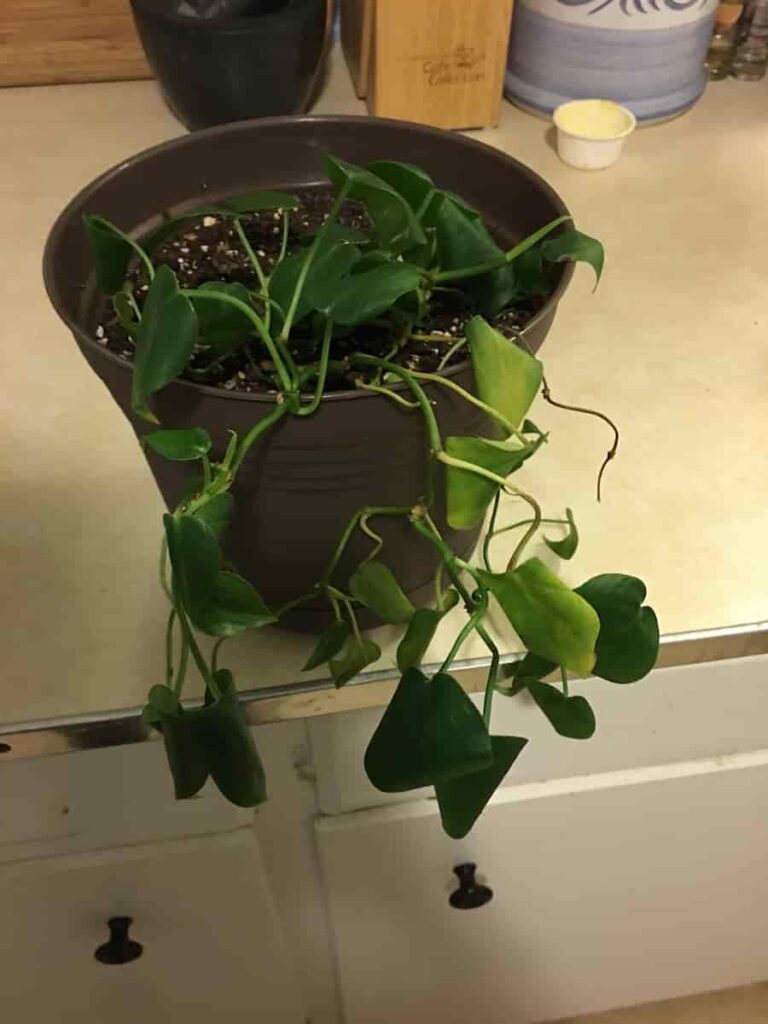
11. Magnesium deficiency
The main symptom of a philodendron with a magnesium deficiency is leaves that curl downward. Thankfully, this problem can be corrected by simply giving your plant a balanced liquid fertilizer.
12. Philodendron isn’t getting enough phosphorus
Unlike a lack of magnesium which causes the leaves to curl downward, too little phosphorus will cause the leaves to curl upward. A balanced, liquid fertilizer helps to ensure the philodendron has all the nutrients it needs.
13. Fungal diseases
Leaf curling may be a symptom of a fungal disease, though the exact one attacking your philodendron can be difficult to pinpoint. Thankfully, the treatment and control options are the same for just about all fungal diseases, as are the preventive measures to help keep the diseases at bay.
14. Insects feeding on the philodendron
While not typically as serious of a problem as fungal diseases, insects can still wreak havoc on your philodendron, causing its leaves to curl. Spider mites, thrips, mealybugs, aphids, and scales are the most common insects that feed on houseplants like philodendrons, and all of them can cause the leaves to curl.
15. Poor or incorrect soil type
Philodendrons ideally need soil that retains moisture while still allowing excess water to drain out. Simply planting the philodendron in any old soil can cause the plant’s leaves to start curling.
The leaves may also turn yellow or brown and fall off the plant, while the entire philodendron starts to wilt and droop.
How to fix a philodendron with leaves curling?
To fix a philodendron whose leaves are curling, the answer is usually to give it more water given that the most common cause of this is underwatering. However, if the problem is due to something else, you may need to take other steps to address the real issue.
In general, making sure the philodendron has the proper care and growing requirements will go a long way to fixing the cause of the leaf curling. It will also help reduce the chance of the plant getting stressed.
1. Give the philodendron enough water
Too little water will have a negative impact on the overall health of the philodendron. It can also make its leaves start to curl.
Keeping the soil moist without being soggy is the ideal soil moisture for this tropical plant.
2. Improve the air flow
Air flow helps to dry any surface moisture on the philodendron, while also improving the overall humidity level and air quality in the room.
Allowing space between houseplants and not crowding multiple plants next to one another will allow air to flow properly through the philodendron’s leaves.
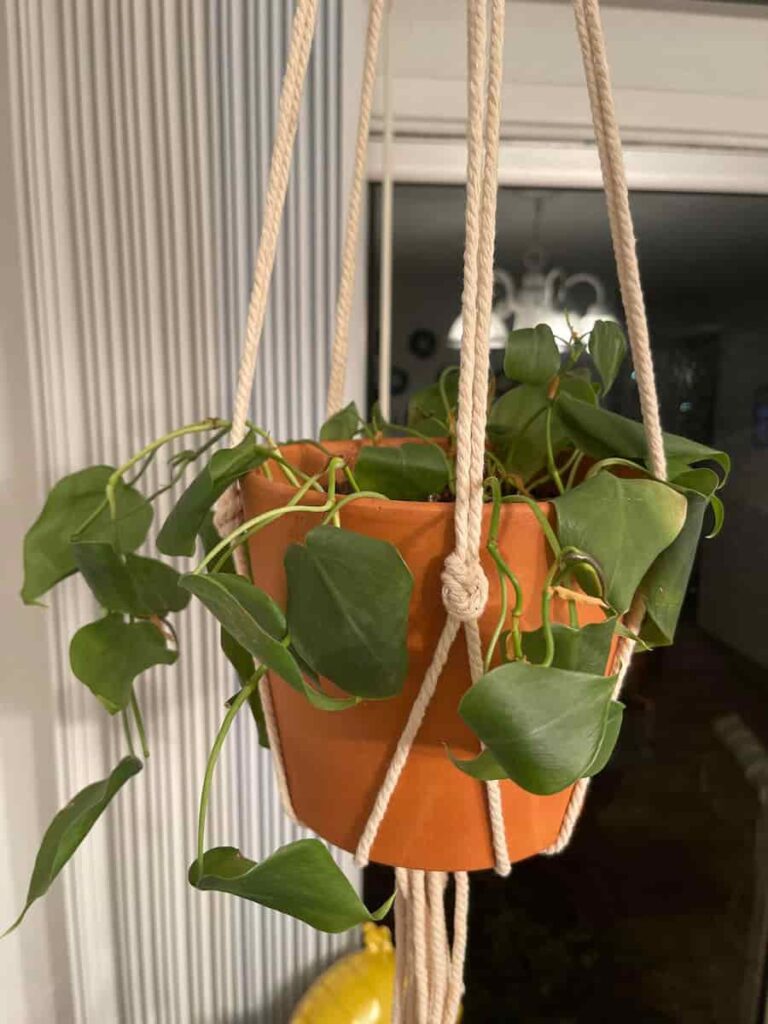
3. Ensure the philodendron has the right temperature
Philodendrons thrive in temperatures that don’t drop below 65 degrees or above 80 degrees. So, aim to keep the room temp where the plant lives in that range.
Never subject the philodendron to temperatures that are below 55 degrees for an extended period of time.
4. Increase your plant’s humidity level
Humidity is another important factor that can have a major impact on the philodendron’s health. Because this plant needs high humidity levels ranging from 70 to 90 percent, you will probably need to use a humidifier or drip tray to maintain these high percentages.
5. Reduce the amount of fertilizer you give
Overfeeding the philodendron will cause salt and excess nutrients to build up in the soil, which will then damage the plant. When you notice your philodendron’s leaves are curling, immediately stop all applications of fertilizer to your philodendron and then flush the soil with running water.
This will help remove those excess nutrients and minerals that are harming the philodendron.
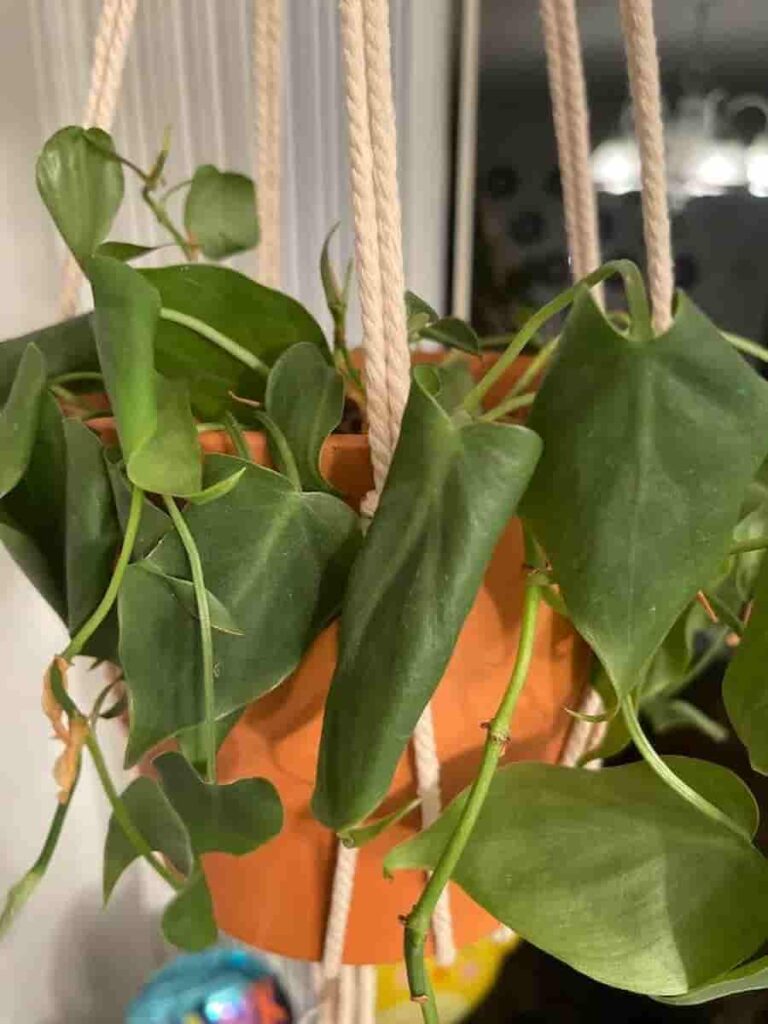
6. Avoid overwatering the philodendron
Overwatering not only causes philodendron leaves to curl, but it also opens the plant up to a whole slew of potential problems, including root rot. Thankfully, this is easily preventable by simply only watering the plant when the top inch of soil is dry.
To test the soil moisture level, you can insert your finger about 1 inch into the plant’s soil. If it feels moist, wait a day or two before testing again. Only water when the soil feels dry.
On average, the philodendron will need watering once a week. Though this can vary depending on the age and size of the plant, as well as its current environment. The amount of watering is generally reduced to only once every 10 days when the plant isn’t actively growing.
7. Set the plant in an area where it will receive indirect, bright light
Far too often, philodendrons are placed in areas where they will receive either too much light, not enough light, or the incorrect type of light. This will cause severe damage to the plant.
That is why it is important to place the philodendron in an area where it will receive indirect, bright light.
8. Keep the philodendron away from drafty areas
Drafty areas, such as those near windows and exterior doors, will subject the philodendron to drastic temperature fluctuations. These ups and downs can stress the plant and cause its leaves to curl. Making sure the philodendron is away from these areas will protect the plant from damage.

9. Pay attention to the type of water you use
The water quality is another potential cause when philodendron leaves are curling, and tap water is usually the one causing all the problems. Tap water contains various minerals and even chlorine, and these can harm your philodendron.
The best option is to use rain water, distilled water, spring water, or filtered water instead.
FYI: If you have to use tap water, fill the water jug with the tap water the night before you will water the philodendron and let it set out overnight. This will allow for the chlorine to dissipate before you water the philodendron.
10. Give the philodendron a boost of magnesium
A monthly application of liquid fertilizer, such as 10-10-10, will help ensure the plant doesn’t experience any nutritional deficiency. This amount should only be applied once a month during the spring and summer, and then reduced to once every 6 to 8 weeks in the fall and winter.
Another way to increase the magnesium of the soil is to add some Epsom salts. This increases the magnesium without changing the soil’s pH level.
11. Increase the amount of phosphorus that the plant receives
As with magnesium deficiency, regular applications of a balanced fertilizer is the best way to ensure your philodendron doesn’t experience a drop in vital nutrients.
For a more organic option, use mushroom compost, fish meal, worm casting, or manure to help raise the phosphorus content of the soil.
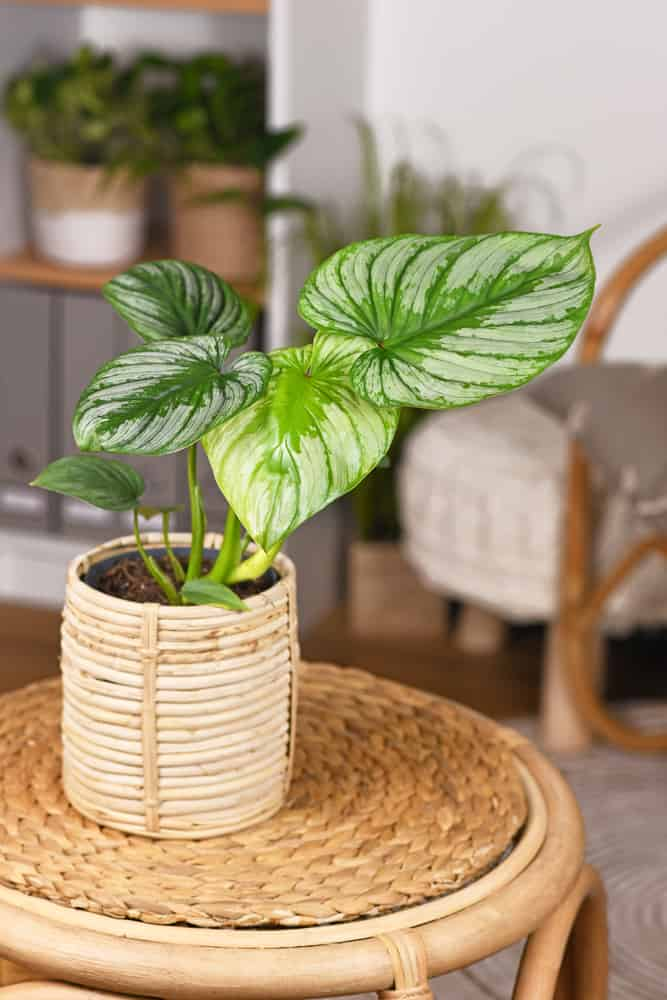
12. Treat fungal diseases with fungicides and preventive maintenance
Fungal diseases are a common problem for houseplants, especially those who are susceptible to overwatering, such as philodendrons. Knowing the signs of these diseases will help you quickly treat them with fungicide, which can help control leaf curling before the disease can cause more extensive damage.
Furthermore, you should implement preventive maintenance to help keep any future fungal diseases at bay. This includes only watering when the soil starts to dry and watering at the base of the plant instead of above.
There are several common fungal and bacterial pathogens lurking in the plant’s soil, and when you water from above, the water will splash these pathogens on the plant’s leaves. Watering at the base of the plant prevents the water from splashing the infected soil onto the foliage.
13. Regularly examine the plant for signs of insect infestation and treat accordingly
Even though they are rarely a serious threat, insect infestations shouldn’t be taken lightly. Not only can they cause philodendron leaves to curl, but they can also make the plant more susceptible to problems.
That is why it is important to inspect the philodendron, looking for signs of pests, such as leaf spots and leaf damage.
Treat infested plants with either insecticidal soap, horticultural oil, or neem oil. In most cases, you will need to apply multiple treatments, typically once every 7 to 14 days. Both the topside and underside of the foliage, as well as the stems and the soil, will need to be sprayed with the pesticide.
Related: 6 Easy Steps to Make Your Philodendron Fuller and Bushier
14. Be picky about the growing medium that you plant the philodendron in
The type of soil you plant the philodendron in will have a direct effect on the overall health of the plant. Using the wrong soil can lead to a slew of issues, including leaf curling and even fungal diseases. That is why it is vital to use soil designed specifically for philodendrons.
Pro Tip: Alternatively, you can create your own potting soil for philodendrons by mixing 1 part peat moss, 1 part potting mix, 1 part orchid bark, and ¼ part perlite. This mixture provides the right amount of moisture retention that the philodendron needs, while still allowing water to freely drain out of the pot.
Will philodendron leaves uncurl?
A philodendron’s leaves may uncurl depending on the problem. If the leaves curl due to stress, for example, the leaves will probably stay curled, but new leaves that emerge will be flat and uncurled. If, however, the leaf curling was caused by underwatering, the leaves will typically uncurl once the issue is addressed.
That doesn’t mean, however, that you can allow the philodendron to once again develop the problem that caused its leaves to curl in the first place and expect them to stay uncurled. In fact, the philodendron’s leaves can start to curl once again if you continue to neglect the plant’s needs.
The best way to ensure the philodendron’s leaves don’t curl again is to provide the plant with the optimal care. This means maintaining a warm and humid environment throughout the entire year, keeping its soil moist without being soggy, and keeping it out of direct sunlight.
How can I help my philodendron leaves unfurl?
Lack of moisture is one of the main reasons for philodendron leaves to curl. You can help to unfurl the leaves by simply increasing the humidity level. This is done in a number of ways, including misting the philodendron every other day, using a humidifier, or setting the plant on a drip tray.
Additionally, you can help unfurl the leaves by making sure the philodendron has the ideal growing conditions and mimic its native habitat as much as possible.
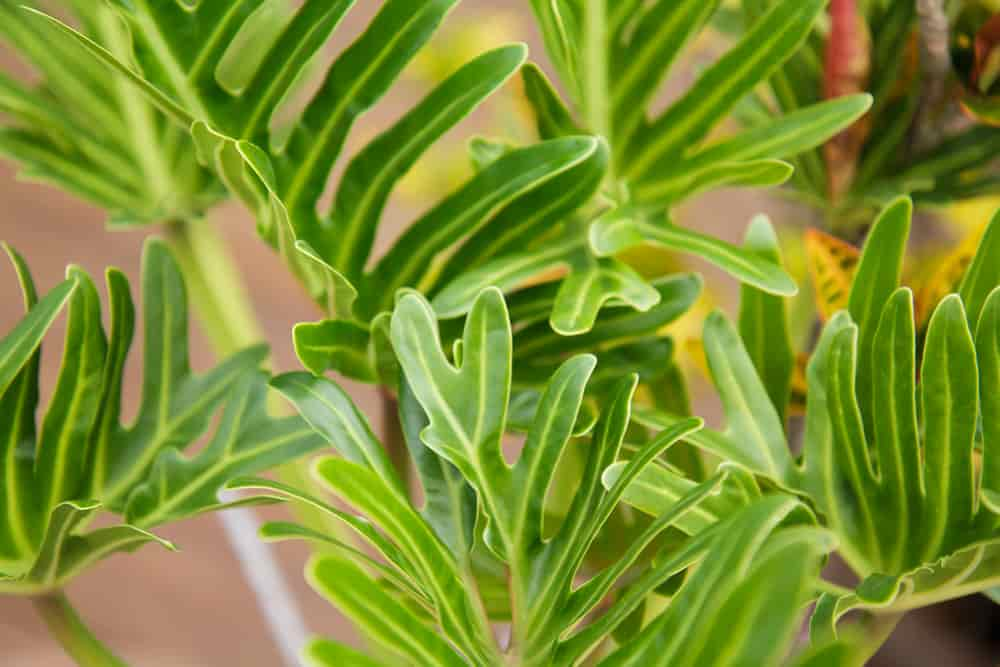
Why are my philodendron leaves curling and yellow?
Too much water is one of the main reasons as to why philodendron leaves are curling and yellowing. Even though philodendrons do love moist soil, they cannot tolerate soggy roots. To help protect the plant, water the philodendron about once a week or when the top inch of its soil feels dry.
Once you start to notice the symptoms of overwatering, it typically means that root rot has already started to develop. You can try to save the philodendron by repotting it in a sanitized pot with fresh soil.
However, the chances of survival are slim and many gardeners often decide to cut their losses and simply discard the infected philodendron.
Why are my philodendron leaves curling and brown?
When a philodendron’s leaves are curling and brown, it is typically caused by dry soil, poor humidity levels, or temperatures that are too cold. Aim to keep the philodendron’s soil moist but not soggy, with a humidity level above 50 percent and in a temperature of between 65 and 75 degrees.
While curling and brown leaves are most commonly caused by dry conditions, they can also come about due to fungal diseases, such as leaf spot disease. Leaf spot disease can sometimes be controlled by pruning your philodendron to remove the infected leaves and then applying copper fungicide to the plant.
Another potential cause of a philodendron having brown leaves that are curling is pest infestations. Common houseplant pests, such as aphids, scales, mealybugs, and spider mites, suck the vital juices of the philodendron, which will then cause the leaves to start to brown and curl.
Treating the philodendron with insecticidal soap will help get rid of these annoying insects.
Why are my philodendron’s new leaves curling?
Several things can cause the new leaves of your philodendron to curl, including disease, herbicides, and abiotic disorders. The most common culprit, however, is insects. Sap-sucking insects, such as aphids, whiteflies, thrips, and spider mites, will feast on young and newly emerged leaves, and as they feed, it can cause the leaves to curl.
The good news is that these pests are usually not a serious concern and can be treated with multiple applications of insecticidal soap, neem oil, or horticultural oil.
You should also move the infected plant to a room away from other plants until you have the pest infestation taken care of. This will prevent the spread of pests to your other houseplants.
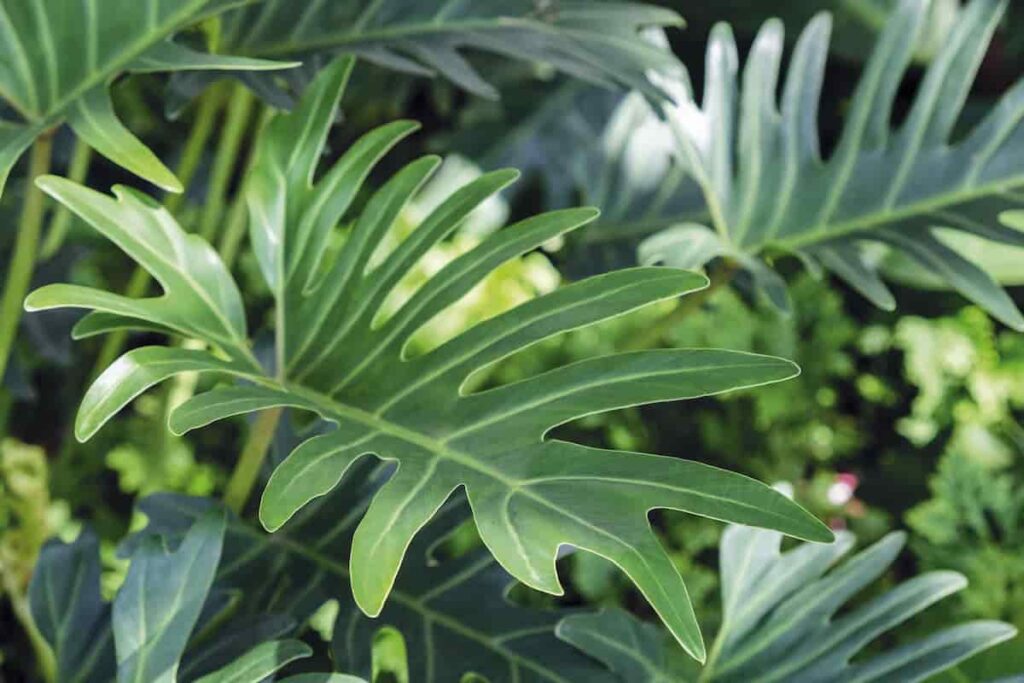
Should I remove the philodendron leaves that are curling?
Whether or not you should remove the curling leaves depends on what is causing the issue in the first place. If it’s due to a fungal disease, pruning can help control the problem. If, however, the cause is underwatering, you shouldn’t remove the leaves as they may bounce back after hydrating the philodendron.
In order to determine whether the curled leaves should be removed, it will require you to know what is causing the problem to begin with. Until you have that answer, you shouldn’t remove any of the foliage just yet.
No matter what, however, you shouldn’t prune off more than 70 percent of the philodendron’s leaves. Doing so will prevent the plant from absorbing enough light that it needs for a strong and healthy philodendron growth rate.
Why are my philodendron leaves curling after repotting?
When philodendron leaves are curling after repotting, it’s a tell-tale sign that the plant is stressed. While this is a common occurrence when repotting plants, it can still harm the philodendron. With time, though, a plant will usually recover on its own.
Thankfully, there are a few things you can do to help reduce the stress and shock naturally caused by transplanting.
The first thing is to only repot a philodendron that is healthy and strong, and only transplant when the plant is actively growing, which is during the spring and summer months. Of course, these two rules can be broken in the event of an emergency, such as needing to transplant a sick philodendron to help save it from a fungal disease.
Additionally, you will want to water the philodendron thoroughly before repotting. This simple act goes a long way to reducing the stress and shock that the philodendron could experience.
